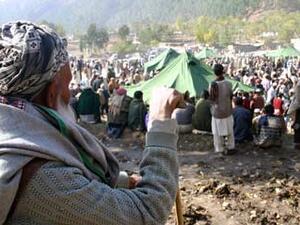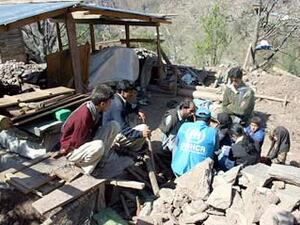Pakistan: UNHCR standing by for possible exodus from high ground
Pakistan: UNHCR standing by for possible exodus from high ground
With heavy snow forecast by the end of this week, we are standing by for a possible exodus of earthquake-affected people from the higher elevations. The Pakistan government estimates that 100,000-200,000 more people could come down in the North West Frontier Province, NWFP, and 30,000 in Pakistan-administered Kashmir.
After the first heavy snowfalls in late November, many people came down to the lower valleys to collect relief items, some returning to their own homes again to construct temporary shelters for their families and livestock.
UNHCR now has 19 mobile teams (43 by the end of this week) on the ground providing technical advice and assistance to the army and the Pakistani authorities in 30 organised camps and scores of spontaneous camps. We hope to expand the number of teams to 65. UNHCR's main priority is assisting local authorities with the 'winterization' of planned and spontaneous camps. It is crucial that every tent has a minimum of two plastic sheets, four mattresses, a stove and fuel and that each person has three blankets. We are also tapping the knowledge of Afghan refugees on how to winterize tents through the safe use of stoves.
We are continuing to fly relief items to Pakistan. In the coming weeks UNHCR and NATO plan to transport 30,000 stoves by commercially chartered planes from Turkey and Jordan, and some by road from Iran. The Jordanian government has said it will fly a planeload of UNHCR relief items such as stoves and plastic sheeting to Pakistan, probably later this week. We are buying some 250,000 blankets in India and China to add to the 600,000 blankets we have already sent to Pakistan. We are also planning to dispatch over 100,000 plastic sheets from our recently replenished emergency stockpile in Copenhagen and are sending an additional 15 vehicles for our teams on the ground.
Needs however, continue to remain high on the ground, particularly with the possibility of population movements from higher elevations. So far we have received US$24.52 million in funding but we need over US$30 million to get through the winter period.









